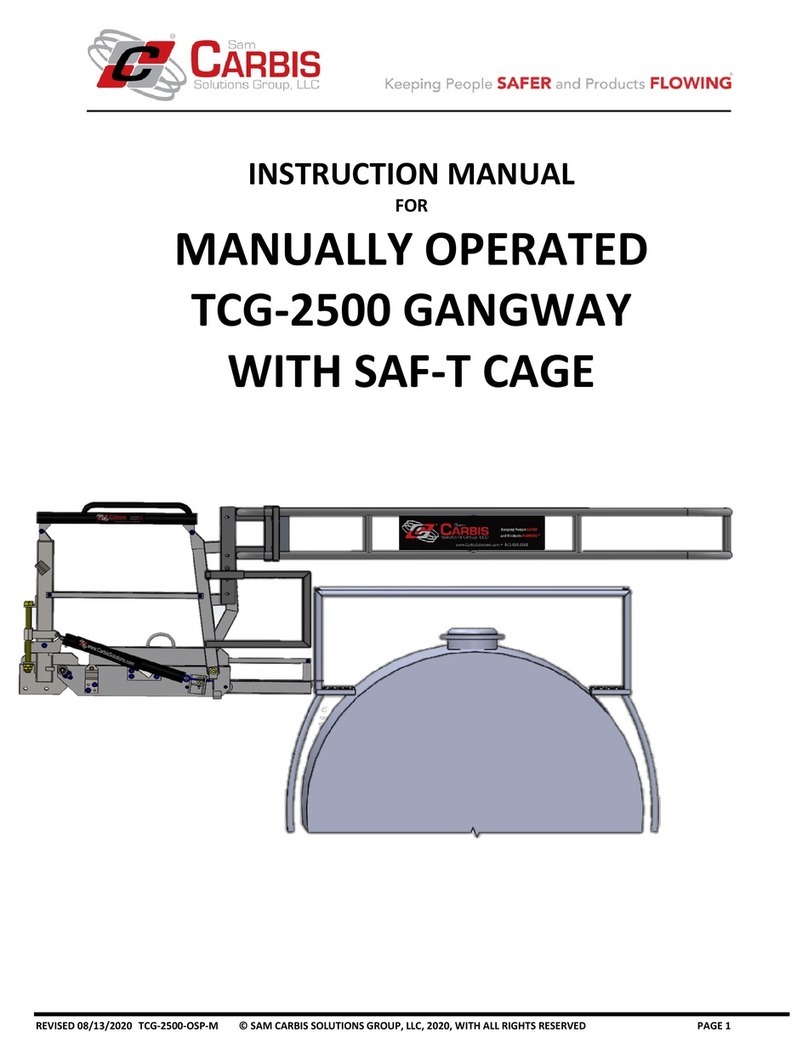1) INTRODUCTION
a) PLEASE READ THIS FIRST PRIOR TO INSTALLATION OR OPERATION
i) On behalf of Sam Carbis Solutions Group LLC., thank you for your purchase of our safety equipment. It is
our pleasure helping you with all your fall protection and product handling needs. We value our customer
relationships and to ensure you get the most out of your equipment, our experienced support team is
available for you to contact throughout your equipment service life. While this manual fully covers our
product, if you should you have any questions or concerns please contact at 1-800-948-7750 or 1-843-669-
6668 for international customers.
ii) Please carefully read this Installation, Operation, and Mainten an ce Man ual as it is an in tegral
pa r t of y o u r p u rc ha s ed Carbis equipment. It is the Owner’s responsibility ensuring all personnel who
operate and or maintain the Carbis equipment first receive comprehensive training. It is also the Owner’s
responsibility ensuring appropriately documented maintenance and inspection activities are, including any
abnormal operating condition and its associated root cause evaluation, followed by corrective actions
implemented to eliminate recurrence. Any identified abnormal operating conditions should be cause for
discontinuing use until contacting Sam Carbis Solutions LLC for further assistance.
iii) With aging of equipment and associated service life-limiting variables, such as corrosion, fatigue, wear,
etc., remedy these discrepancies as soon as possible during periodic maintenance to preclude operational
failure
iv) This manual provides guidance to operating and maintenance personnel in the matter of safe
operation and recommended practices, it is not, and cannot be, a substitute for well-trained personnel
and for successful and trouble-free operation. Great reliance must be placed upon the knowledge,
background, and experience of the operating and or maintenance personnel with this manual serving as a
guide. The warranty on the equipment is automatically voided if the information contained in this manual
is disregarded whether willfully or inadvertently.
v) This product was inspected prior to shipment and meets Carbis’ Quality Control Standards. It is important
to completely review the information contained in this manual before operating the unit in addition to:
1) Upon delivery, inspect the equipment for shipping damage or any loose or missing hardware. All
factory installed fastening hardware has been tightened prior to shipment. If loosening any fastening
hardware, whether factory or field installed, it must be re-tightened before use.
vi) It is imperative operating and maintenance personnel prior to using the equipment become familiar
with the safety information contained in section 3) SAFETY LANGUAGE.
vii) Visually inspect all safety placards, signs, and decals for serviceability, visibility and legibility. Operating
personnel must be familiar with the contents of such placards, signs, and decals. See Section 3) b) for
SAFETY LABEL DESCRIPTIONS for the description of all safety signs that appear on the equipment
described in this manual.




























